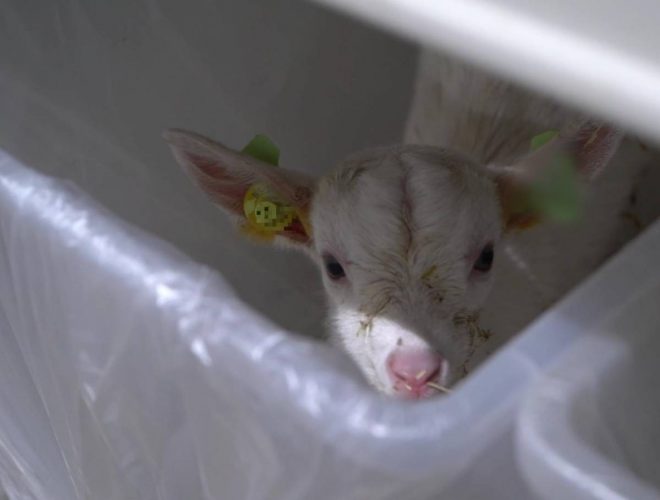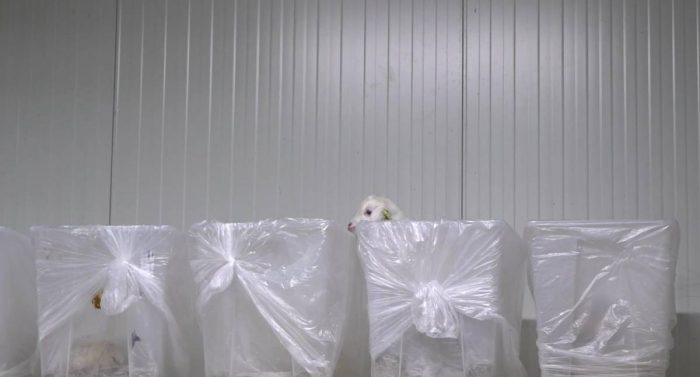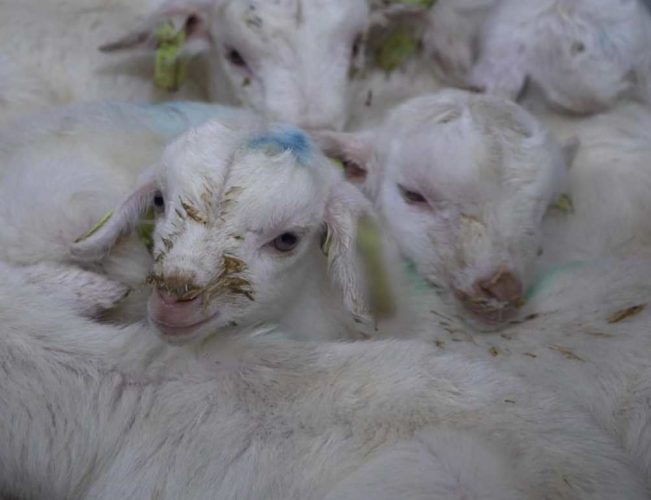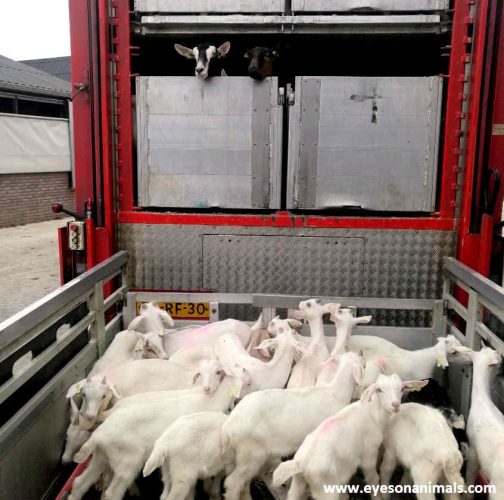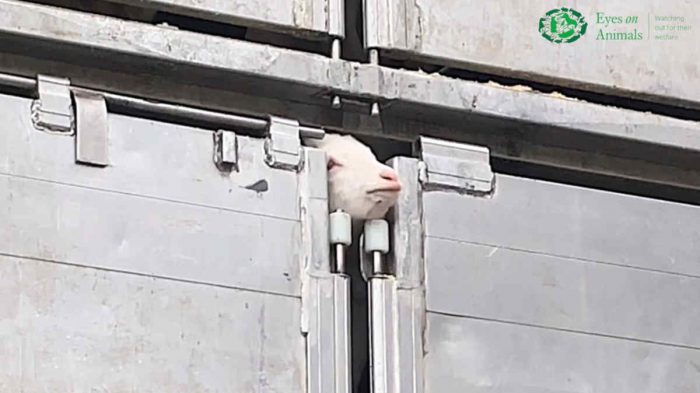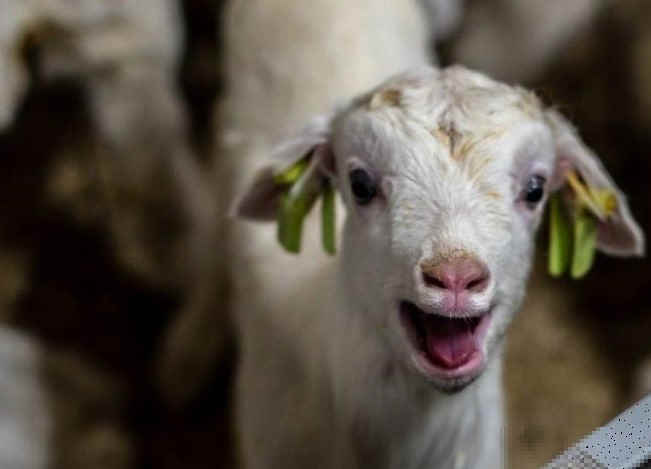Over the past 4 years Eyes on Animals has done extensive research and conducted investigations into the welfare of male goat-kids. This as a reaction to one of our inspections in 2017 where we found dozens of dead and dying male-kids on a farm in Brabant. Our findings were not an incident: in a letter to the Dutch Parliament, Minister Schouten reported that 1 out of 3 male-kids on fattening farms die before slaughter-age.
Between 2017 and 2020 we inspected dozens of goat farms, collecting centers and trailed livestock trucks transporting male-kids to slaughterhouses. We also spoke to various parties within the goat sector. Our report (dutch) with findings and recommendations will be presented today, 30 November 2020, on the Dutch consumer tv-show “Radar”.
Main welfare issues
- More male- kids than ever before slaughtered at a very young age. In 2019, 30-40% of the male-kids were slaughtered at 7 – 10 days of age. In 2020, 80-90% of the male-kids were slaughtered at this young age. This drastic jump was also partly due to COVID-19 as there was almost no market for goat meat at all (export market limited). Sometimes farmers are forced to bring their male-kids to slaughter as they do not have space to keep them on the farm, but are also not allowed to build an extra stable. However, the most common reason is that male-kids are not profitable; they do not produce dairy and few people eat their meat.
Fate of kids born in during lamb season 2017 2019 2020 Kids kept and fattened on the dairy goat farm 20% 40-50% <10% Kids sent to a fattening farm 60-70% 10% <10% Kids slaughtered at 7-10 days old 10% 30-40% 80-90%
- Prolonged transport without milk. Kids at 7-10 days old can’t stand firmly on their legs yet and are dependent solely on milk for their nutrition. Transport to the slaughterhouse often takes many hours because the kids are collected at different farms. By the time the livestock truck is full, 7 to 8 hours have gone by. All this time they are deprived of milk. Many kids arrive at the slaughterhouse very weak.
- Insufficient care for kids due to scaling-up and low yield. On the goat dairy farm, the male kids often do not get enough care. The focus is on the female kids which will be used to later produce milk. Male kids, which have little value, get colostrum (first milk a mother produces after giving birth, full of antibodies) of inferior quality, get colostrum late or not at all (since they are slaughtered just 7-10 days after birth). On larger farms, there is a bigger risk that kids do not receive proper care.
- No statistics: goat-kids that die within one week of birth remain unregistered and thus out of sight. As of 1 December 2020, goat-kids must be registered within one week after birth (instead of within 6 months as is the current rule) so that mortality can be better measured. However, goat kids that die within that first week will still remain out of sight. Goat-kids who do not receive colostrum (to save costs) often die in their first week of life, but there are no statistics about how many die because their mortality is never recorded.
- After birth kids are taken away from mother and individually housed. Goat kids are separated from the mother immediately after birth and put in a plastic container, often individually. In these containers there is little room for them to move and a total lack of social interaction.
Recommendations
- Minimum transport age of 3 weeks. This prevents transport at a very young age to slaughterhouses. If dairy goat farmers have to keep the male-kids on their farms for three weeks and are directly responsible for the mortality rate, the welfare of the male-kids will increase and their lives will have some value. This is already the minimum requirement for the organic industry.
- Mandatory registration of kids < 3 days after birth. This will expose companies with high mortality due to poor colostrum supply more easily.
- Spread out birthing over the entire year. If kids are no longer all born in the same season, supply and demand can be better matched and it will lower the burden of caring for many kids all at once.
- Stimulate keeping kids with their mothers in the herd. A handful of goat dairy farms in the Netherlands keep the kids with their mothers in the herd for a few weeks and up to a couple of months. The experience is that these kids grow better (they have continuous access to milk) and have a better quality of life. They can socialize with other kids and feel protected by their mother. Moreover, these kids are never loaded on to trucks and transported or slaughtered at a young age. However, it is essential that the dairy goat farmer ensures that the kids drink immediately and sufficiently after birth.
- Stimulate more climbing equipment in the barn. Goats naturally live in hilly and mountainous areas. They have a strong urge to climb. Offering the goats more possibilities to climb will contribute to a positive well-being.
- Municipalities need to ease the rules so farmers can fatten their own male goat-kids.
Read the full report and other recommandations
Conclusion
Due to the popularity of goat milk and goat cheese, the number of dairy goats in the Netherlands has increased fivefold since 2000 and even sevenfold per farm. This growth means there has also been an increase in the number of kids born in The Netherlands. An estimated 150,000 male-kids were born in 2019.
A large number of the male-kids is brought to slaughter when they are still very young and dependent on milk. The male-kids generate little; the cost price is often higher than the revenue. But this should not be an excuse to treat the male-kids as a waste product. The high price of goat milk more than compensates for the low revenue of the male-kids meat. The goat sector has to take its responsibility and take good care of the kids too, even if this means that they have to set aside a small percentage of the milk price for this.
With thanks to the Barth-Misset Fund who financially endorsed this investigation.
